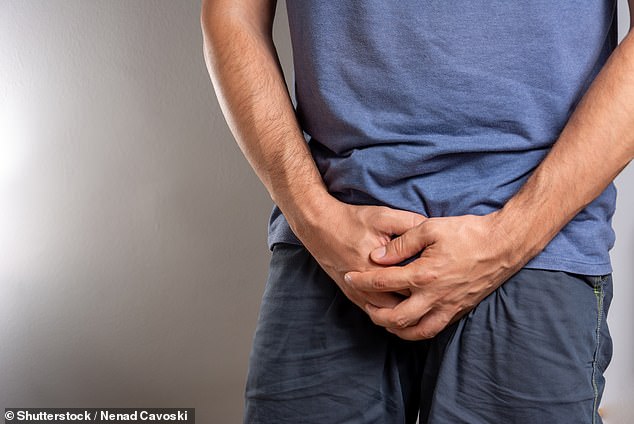A kick in the genitals or childbirth? Scientists discover why men and women experience pain differently
Men and women have long debated whether a kick in the genitals or childbirth is more painful.
Although the verdict is still out, researchers are one step closer to finding the answer after discovering why a person’s gender determines their pain threshold.
Scientists at the University of Arizona (UA) have identified functional sex differences in nociceptors, the specialized nerve cells that cause pain, suggesting that men and women experience pain differently.
For example, nociceptors in women were found to be more sensitive to a hormone linked to pain, while nerve cells in men were not phased.
Their findings could pave the way for future developments in painkillers such as Ibuprofen, which can be used to treat men and women individually.
Men and women have long debated whether a kick in the genitals or childbirth is more painful. Although the verdict is still out, researchers are one step closer to finding the answer after pinpointing why a person’s gender determines their pain threshold.
“Until now, it was believed that the driving mechanisms that cause pain are the same in men and women,” says Dr. Frank Porreca, research director of the Comprehensive Center for Pain & Addiction and professor at UA.
“Conceptually, this paper is a major advance in our understanding of how pain can be caused in men and women,” he added.
Nociceptors are activated when a person is injured, triggering a response that causes people to remove themselves from the source of danger, such as placing your hand on a stovetop or experiencing the jarring sting of a jellyfish.
The UA team tested how the nociceptor cells responded to substances common in both men and women: prolactin, a hormone that triggers lactation and breast development, and orexin B, which regulates sleep.
Female nociceptors were activated when given high doses of the hormone, while those of men showed no effect.
On the other hand, orexin B sensitized male nociceptors but did not affect female nociceptors.
The team then tried to block prolactin and orexin B.
Blocking prolactin stopped nociceptor activation in women, but had no effect on men – and hindering orexin B worked in the opposite direction.
Dr. Porreca, the study’s lead author, told DailyMail.com that the study “does not show that pain is worse in men or women, but rather that the nociceptors are different in men and women.”
The researchers chose the two compounds after reviewing a separate study that reported that prolactin and orexin B sensitize nociceptors.
The researchers hope their findings could lead to better pain treatments that can be tailored to a person’s gender, rather than a one-size-fits-all solution.
‘Different mechanisms of activation of the nociceptors mean that we can find better ways to prevent their activation specifically in women or specifically in men, to achieve optimal treatment of pain in both men and women,’ Dr. Porreca to DailyMail.com.
Current pain and anti-inflammatory medications such as Ibuprofen work by normalizing the threshold for activation of the nociceptors, but do not target men and women equally.

The University of Arizona team discovered that there are different nociceptors for men and women that cause them to feel pain differently
Now that scientists know that there are male and female nociceptors, this means that drugs can be produced that specifically target reducing orexin B and prolactin.
Speaking about their findings, Dr Porreca said: ‘This offers the opportunity to treat pain specifically and potentially better in men or women, and that’s what we’re trying to do.’
The existing US Food and Drug Administration approval of orexin receptor antagonists treating sleep disorders would make it easier to prevent nociceptor sensitization.
“We are bringing the concept of precision medicine – which takes a patient’s genetics into account when designing a therapy – to the treatment of pain,” said Dr. Porreca.
‘The most fundamental genetic difference is: is the patient male or female? Perhaps that should be the first consideration when it comes to treating pain.”
It turns out that pain thresholds are “not very different between men and women,” Porreca said, but the thresholds can be activated for different injuries in men and in women.
The researchers’ findings could mean that there will eventually be a solution to the pain men experience from being kicked in the groin and the aftereffects of childbirth: sex-specific pain medication.
